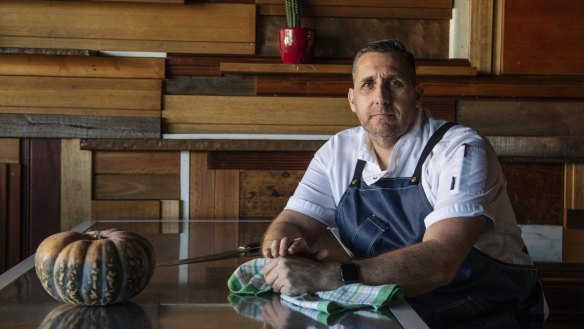Milk Crate: The real costs of running an independent restaurant

Operating an independent restaurant is a tough game, made even tougher thanks to big hospitality groups dominating the scene with a constant stream of new openings and seemingly bottomless budgets.
I call them the "Woolworths and Coles" of the restaurant industry. And good for them – they are smarter than me, and given the same opportunity I would do the same.
The biggest problem I find in hospitality is public attitudes. You see, the customer isn't always right. In fact, most of the time they are wrong and we just let them think they are right.
There's a misconception that restaurants are a licence to print money. The reality is that they should be treated like a night at the theatre, or an airline flight. We all operate on the same basic principle that we have a small window of time and opportunity to generate income from the seat you have occupied for your experience.
People look at the cost of the ingredients on a plate and think, "Wow, I could make that dish at home for less". And maybe you could if you excluded all the expenses restaurateurs pay before and after you have consumed that delicious meal.
The rising cost of labour, rent and produce has been well documented, but there are many other restaurant costs people aren't aware of.
The cost of lighting and airconditioning, for instance. The cost of licensing a Spotify account to play music in a commercial venue. The cost of using an online booking system, updating a website and employing someone to manage marketing and social media accounts.
There's the cost of linen, laundry, glassware, plates, cleaning supplies, plants, pest control, fire extinguisher testing and random health inspections ($120 each time). The cost of cutlery! It is constantly being replaced as a result of theft or staff accidentally scraping it into the bin. (Cutlery loss is such a large expense for some establishments that you can buy specially designed super magnets to catch wayward utensils.)
One of the biggest cost impacts to independent restaurants I don't see written about very often is GST. Successful group-operated restaurants will often generate about 60 per cent of revenue from food and the remaining 40 per cent from alcohol. This is great because alcohol has a GST component at wholesale, which can be offset when you sell it to diners. (As a destination restaurant, however, we are lucky to generate 20 per cent of revenue from wine sales.)
More than 80 per cent of our food costs at Pazar are fresh produce, meat and raw products, which are GST-free. Ten cents in every dollar goes to the tax office when we turn those fresh ingredients into a meal. It's a significant percentage that adds up, and if you're with Uber Eats, they might take another 35 per cent on top of that for every delivery provided!
Profit margins are small and many restaurant owners are in the business because they enjoy feeding people delicious food. There are many costs and challenges involved in running an independent eatery, but we do it because we love it; something to consider, perhaps, if you're inclined to complain about the cost of avocado on toast at your local cafe.
Attila Yilmaz is the owner-chef of Pazar Food Collective in Canterbury, Sydney.
Restaurant reviews, news and the hottest openings served to your inbox.
Sign up